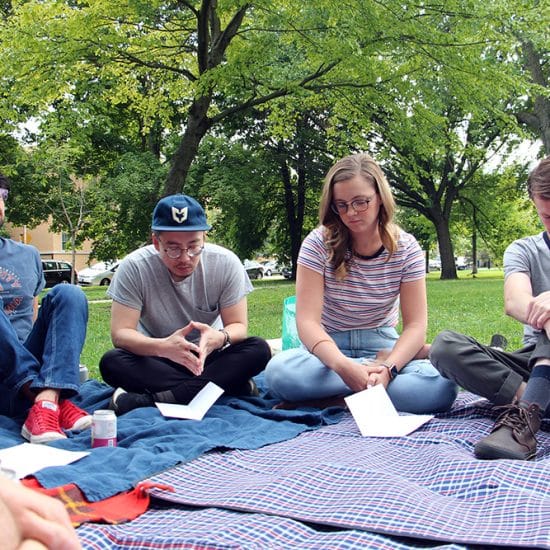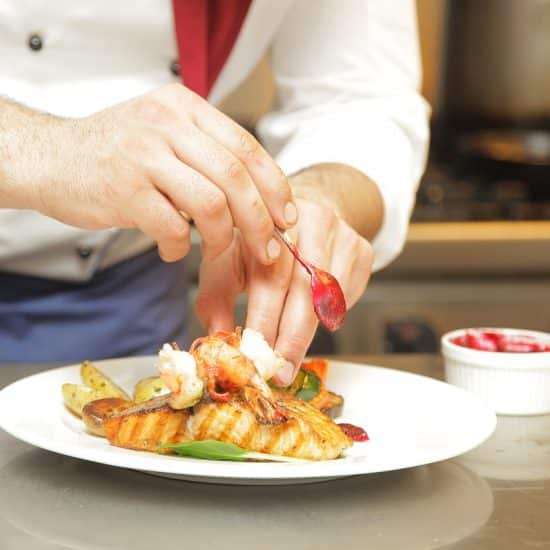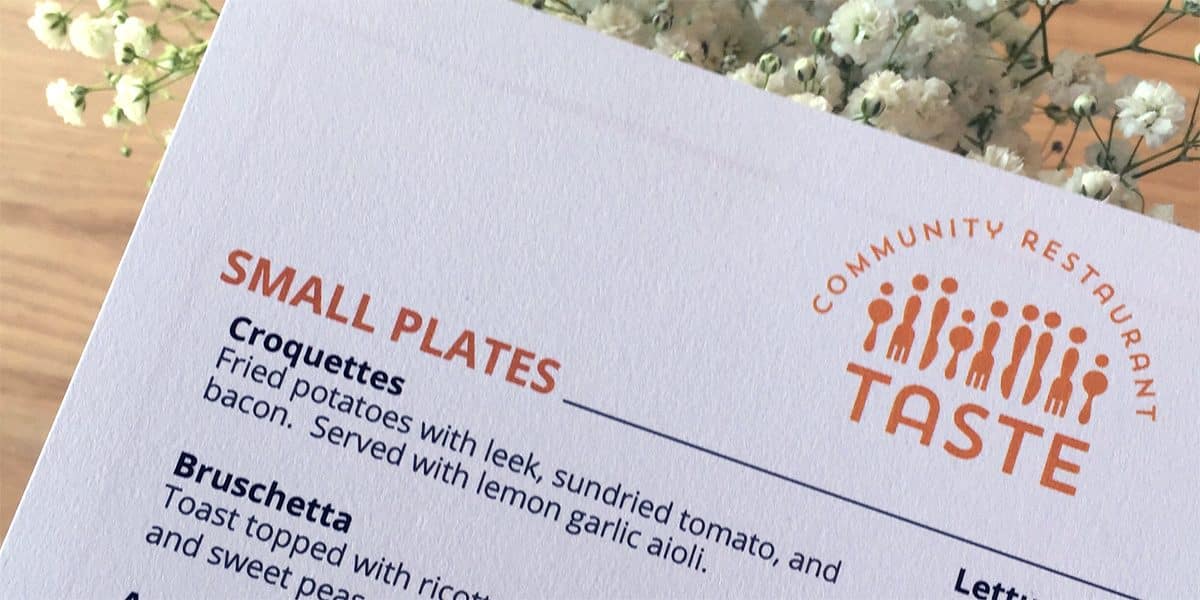
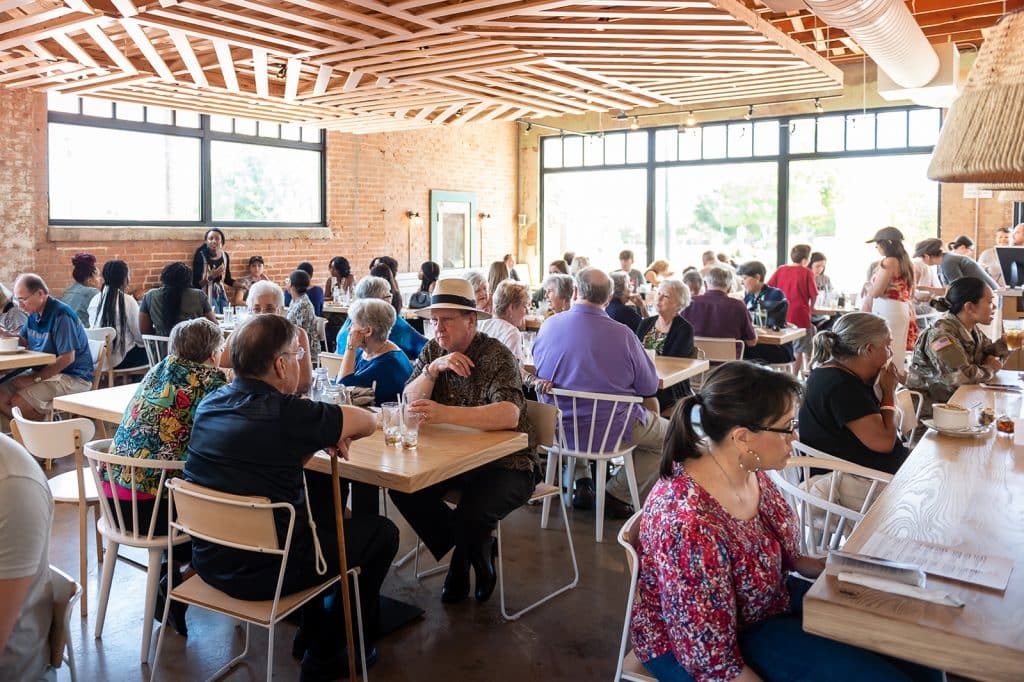
People dine at Taste Community Restaurant in Fort Worth, Texas. Photo by RossGraphix, courtesy of Taste Community Restaurant
FORT WORTH, Texas (RNS) — Taste Community Restaurant, located in Fort Worth’s trendy Near Southside, hit Yelp’s “Top 100 Places to Eat for 2019” list earlier this year.
That acclaim did not surprise locals or anyone who pays attention to dining in Texas. Opened two years ago, Taste already ranks among the top places to eat in the state.
Julie Williams, who serves as the restaurant’s communications director, takes the accolades in stride.
“That’s completely God at work,” she said.
Besides its good food, what sets Taste Community apart is that it’s a nonprofit, pay-what-you-can, faith-based endeavor.
“Our mission is to serve,” said Jeff Williams, Julie’s husband and the restaurant’s CEO, before opening the doors at Taste on a recent day.
For a moment, the hustle and bustle of a restaurant getting ready to open quieted down. Jeff, sporting a well-worn green T-shirt that read “#keepfortworthfed,” circled around a long wooden table to pray with the cooks, servers and other staff.
Chuck Briant, a longtime volunteer, said without hesitation that the best thing currently on the menu is the Roasted Pork Tenderloin. Second to that: Chicago Style Eggrolls.
As he talked, the smell of the day’s lunch wafted over from the open-air kitchen where Jeff stands and cooks. The food here is considered “New American” and the menu changes every few months.
No matter what the entrée or appetizer may be, one thing you won’t find on the menu is the price.
That’s because Jeff doesn’t want a suggested price to inhibit people from eating a gourmet-style meal. He’s trying to use this high-quality dining experience as a conduit for conversation, dignity and reducing food insecurity in Tarrant County.
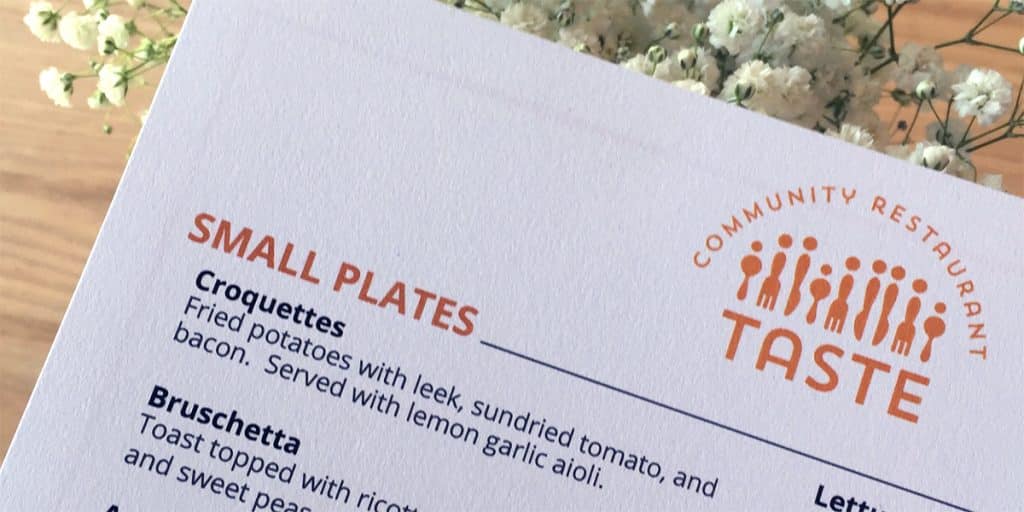
A menu at Taste Community Restaurant in Fort Worth, Texas. Photo courtesy of Taste Community Restaurant
One of the conversations he wants people to have is about faith. He credited God for inspiring the start of the Taste Community Restaurant and Taste Project, its umbrella nonprofit organization.
“God very much spelled this out to me in a dream,” said Jeff. “For me, if I have something that is that detailed, then there’s probably something behind it.”
He had the dream in 2012, but it took years to make it come to life. Jeff said that when he told Julie, she was skeptical.
She wasn’t the only one. A lot of people didn’t think the restaurant’s pay-what-you-can approach would work, Julie said.
“It goes against all standard business practices,” she said.
Today, 70% of Taste’s funding comes from the food it sells. The rest is covered by grants and donations. The goal is to gradually become 100% funded from its food.
The space has a modern design with exposed brick walls, wood beams in the ceiling and succulents decorating built-in shelves. There are enough wooden tables and matching chairs to seat its nearly 100-person capacity.
Light streams in from a wall of windows beside the front door near a corner where T-shirts and other Taste merchandise can be procured.
It’s an environment fit for a corporate lunch or a family coming home from church dressed to the nines. But the atmosphere isn’t at all stuffy, and not everyone is dressed up. About 25% of the restaurant’s clients can’t afford to pay. Some are homeless or very close to it.
On a Thursday before noon, a young man with dreadlocks and a T-shirt that’s seen better days sits next to a younger guy in a plaid button-down shirt and jeans. The two men look like they come from different sides of the world. But here they are, together, eating at the Taste Community Table — a place where strangers can mingle and share a meal.
“Conversations happen at the dinner table,” said Jeff. “Food is a good avenue to use to make people feel love and wanted.”
The staff, which is 80% volunteer, treats everyone with dignity and equality.
Customers pay in one of three ways: what they can afford (which might be pennies); what they would typically pay at a restaurant for the same food (suggested prices are on the ticket at the end of the meal); or what they would typically pay plus a little more.
The staff doesn’t get to see what people pay.
This allows people to eat with dignity. It also works to reduce food insecurity, which happens when a person doesn’t have access to enough food to sustain an active, healthy life, according to the U.S. Department of Agriculture.
In 2017, Feeding America reported that 1 in 8 Americans was food-insecure — that’s over 40 million people, including 12 million children.
Texas has the highest rate of food insecurity in the country, with 14.9% of its population unsure of where the next meal will come from. In North Texas, where Taste is located, 1 in 4 children comes from a family that struggles with food insecurity, according to Tarrant Area Food Bank in Fort Worth.
“People make assumptions on who is food-insecure,” said Micheline Hynes, nutrition services manager at Tarrant Area Food Bank. “A lot of times it’s people and families who are working a job but still not making enough money.”
It doesn’t always feel good to go to a soup kitchen or communal feeding site, said Hynes. People can feel embarrassed or ashamed.
“It’s an extremely negative feeling when you can’t feed your children. Taste is able to treat people with dignity and instill hope for the future,” she said.
Taste tries to eliminate that sense of shame.
“Our job as Christians is to show Jesus’ love and be sensitive to people,” said Briant, who volunteers at Taste eight to 12 hours a week. “The thing about this place is everyone is treated with dignity, which is rare. I think a lot of people think Christians beat people down with Scripture.”
When he interacts with diners, Briant’s philosophy is to wait on the Holy Spirit to open doors and minds. He talks with people about their lives and always asks, “Where are you with God?” No matter how the conversation goes, he said, he’s OK with their answers; those interactions and the opportunity to feed the hungry show the Holy Spirit at work.
“It’s so hard out in the world to practice your love and Christianity. Here, you can see the results. When people write notes like: ‘This is the only meal I’ve had today. Thank you.’”
See also:
Church with a Food Truck Worships in a Parking Lot
What Happened When Panera Launched a ‘Pay What You Can’ Experiment
Winnipeg Pizzeria Lets Customers Donate a Slice to Others in Need



